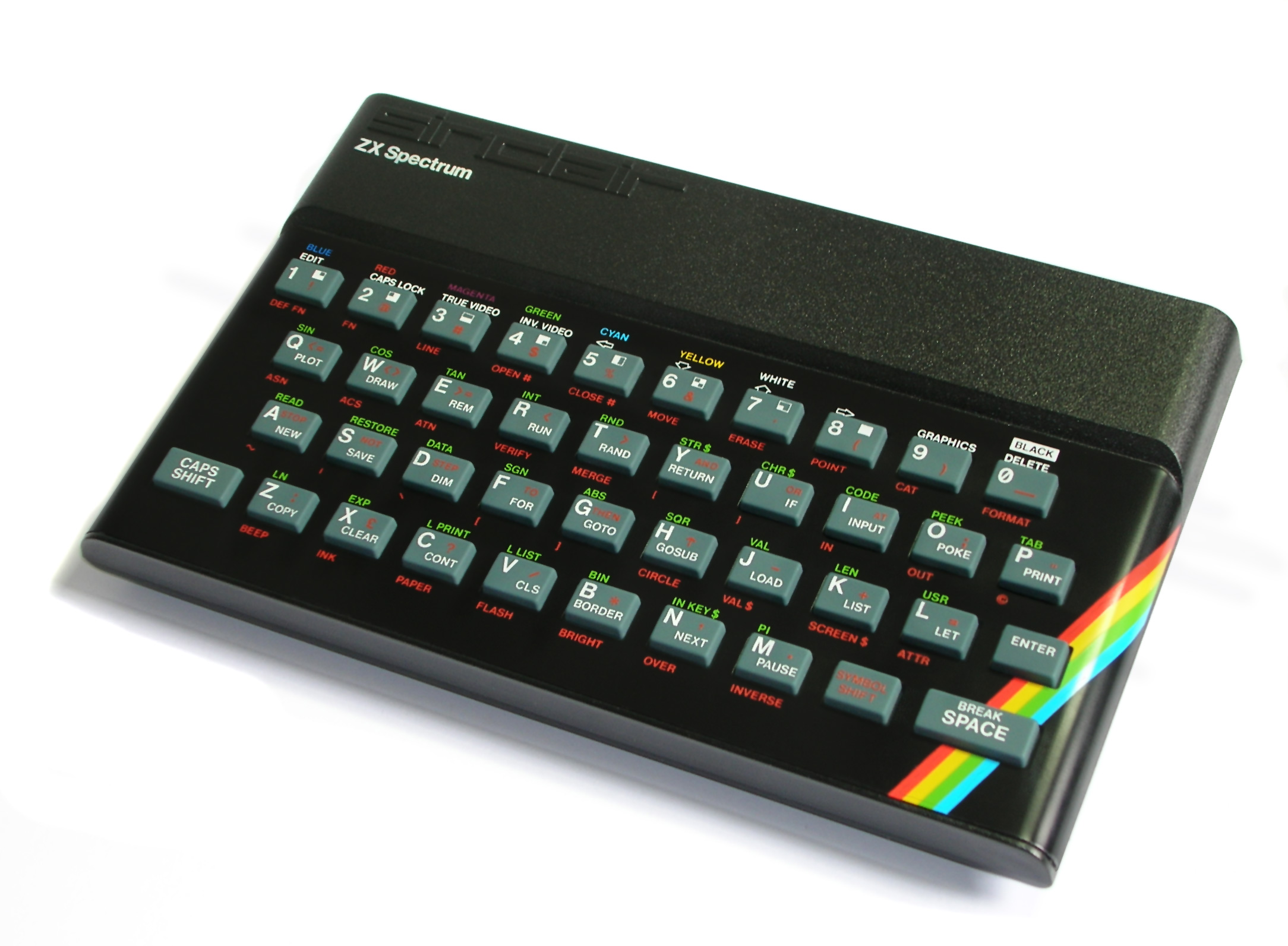ZX Spectrum

Technical Specifications
- CPU:
- Zilog Z80
- RAM:
- 16 KB or 48 KB (later models up to 128 KB)
- Released:
- Fri Apr 23 1982
- Origin:
- United Kingdom
The ZX Spectrum was one of the most iconic and influential home computers of the 1980s, particularly in the UK and Europe. Released in April 1982 by Sinclair Research, it offered colour graphics, sound, and a full BASIC interpreter at an incredibly affordable price point.
The Spectrum—affectionately known as the “Speccy”—was instrumental in sparking the British games industry and inspiring a generation of bedroom coders. Its unique attribute-based colour system created the distinctive “Spectrum look” that became synonymous with 1980s gaming.
Key Features
- Z80 Processor - The popular 8-bit CPU used in many computers and game consoles
- Affordable Color Graphics - 15 colors (8 basic + bright variants)
- Compact Design - Small, lightweight, and TV-friendly
- Massive Software Library - Over 24,000 titles released
- Built-in BASIC - Sinclair BASIC with unique keyword entry system
The Attribute System
The Spectrum’s most distinctive feature was its colour attribute system. Each 8×8 pixel character cell could only display two colors—one foreground and one background—leading to the famous “attribute clash” when graphics didn’t align to the 8×8 grid. This limitation became a creative constraint that defined the Spectrum’s visual aesthetic.
Cultural Impact
The ZX Spectrum was more than a computer—it was a cultural phenomenon that defined a generation. Its low cost made it accessible to families across the UK, and its simple BASIC interpreter made programming approachable for young enthusiasts.
Many of today’s leading game developers, including the founders of Rare, Codemasters, and countless indie studios, got their start on the Spectrum. The machine’s limitations forced creativity and optimisation skills that remain valuable today.
Why Learn Spectrum Programming Today?
Programming the ZX Spectrum teaches essential skills:
- Resource constraints - Working with limited memory and processing power
- Creative problem solving - Achieving great results within tight limitations
- Assembly optimisation - Making the most of the Z80 processor
- Graphics programming - Understanding attribute-based colour systems
- Sound synthesis - Creating music and effects with minimal hardware
- Retro game development - Learning the foundations of classic game design
The Spectrum’s elegant simplicity makes it an perfect platform for understanding the fundamentals of computer graphics, sound, and game programming.
Learning Phases
Phase 1: Z80 Assembly Through Character-Based Games
Master Z80 assembly programming through creating 16 complete games. Learn one core programming concept per game, from basic text movement to advanced attribute effects, building a comprehensive foundation for Spectrum game development.